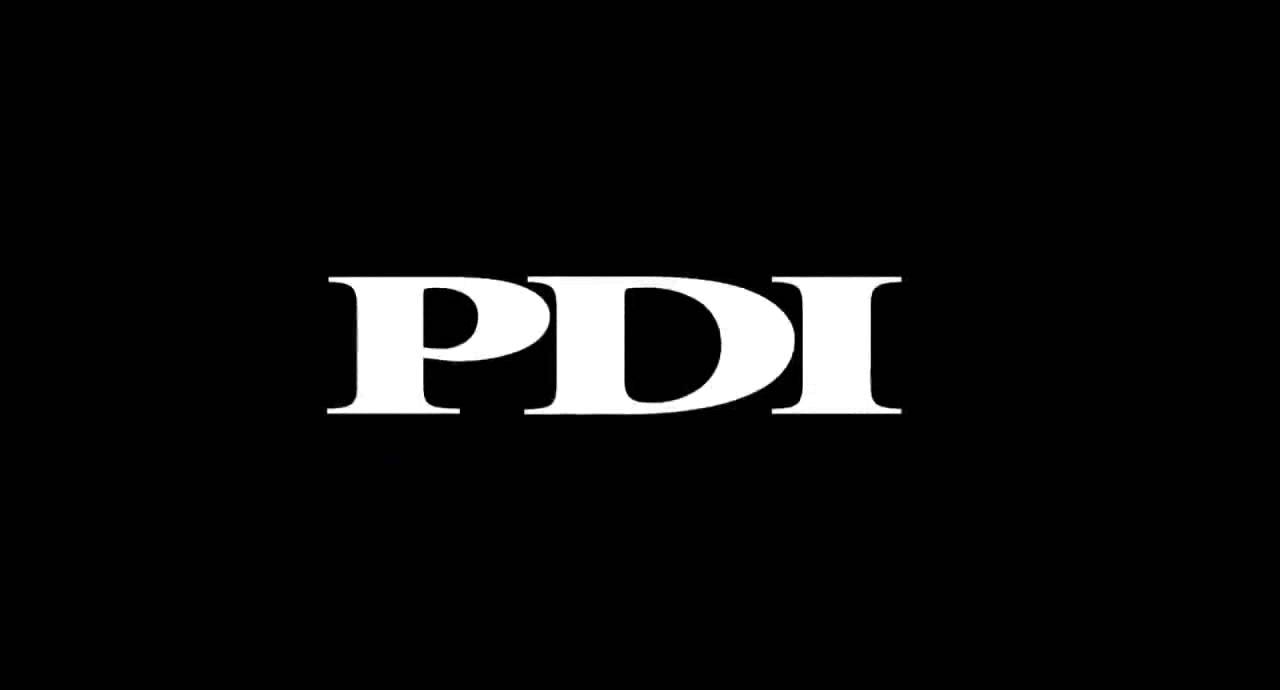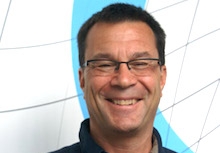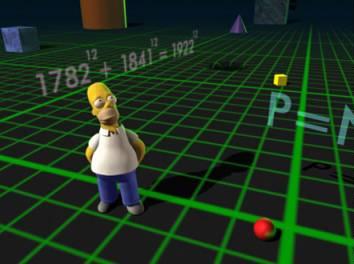
Title
Date
Description
Multiple Available
There are multiple entries on this date. You can modify the date range below to see them all.
Pacific Data Images ( PDI )
Established Date: Aug. 11, 1980
Deceased Date: Jan. 30, 2015
- All
- co-founder
- pioneer
- Simpsons
- Pacific Data Images
- visual effects
- Computer Animation
- Animation
- animation
- PDI/DreamWorks
- dreamworks
- CAPS
- PDI
- Disney
- DreamWorks
- Rhythm & Hues
- CAFE
-
Incorporated on August 11th 1980 by Carl Rosendahl, PDI originally began in a small office in Los Altos. Carl grew up in LA and graduated with a degree in Electrical Engineering from Stanford in 1979. Wanting to combine entertainment with his technical experience, computer graphics seemed a natural solution. Times being what they were, Carl formed his own company rather than seek employment at one of a very few established companies. Richard Chuang and Glenn Entiss made it a company of three in 1982. Later, after moving to a Sunnyvale industrial complex until 1984, PDI moved into another larger building owned by Carl's father. They remained there until moving to their present location in Palo Alto in 1997.
-
The year 1995 saw Carl knocking on Hollywood studio doors again, this time with better results. In March 1996, PDI signed a co-production deal with Dreamworks to create the original computer-animated feature film Antz. The hugely successful Shrek (2001) was to be followed by Tusker before that project was canceled. Shrek 2 (2004) and finally Madagascar in 2005 were the companies last films to be produced under the PDI/Dreamworks moniker.
first Dreamworks partnership -
In 1998, Richard Chuang, Glenn Entis, and Carl Rosendahl were awarded a Scientific and Technical Achievement Award for the concept and architecture of the PDI Animation System.
Academy Award -
PDI always has gone beyond pure commercialism with its support of short animated films for their own sake. Some of the earliest memorable SIGGRAPH clips include Happy Drinking Birds, Chromosaurs, Opera Industrial, Cosmic Zoom, Burning Love, Max's Place, Locomotion, and Gas Planet. More shorts include Gabola the Great, Sleepy Guy and Fat Cat.
short films -
Along with the strong 2D effects work being produced, PDI also began very early to experiment and create 3D character animation. Waldo, the first ever 3D CG real-time animated "muppet," was created for the Jim Henson Hour in 1988. The Crest Toothpaste "Singers" (1988) and DOW Scrubbing Bubbles (1989) commercials were followed by the Last Halloween television special in 1991 (based on the M&M Mars candy commercial campaign started by ILM). In 1994, PDI broke a long-standing stop-motion tradition by …
early 3D character animation -
Soon after opening the LA office, PDI got a big break with some lesser-known but still important work on Terminator2: Judgment Day. PDI did a number of different "invisible" effects such as wire removal and digital plate reconstruction.
Terminator 2 -
The first PDP-11/44 was used for programming much of the original proprietary code written by Richard and Glenn (and Carl, too). Richard concentrated on the renderer and later on lighting tools. A DeAnza framebuffer also was used early on. Their very first jobs were doing broadcast graphics for Jose Diaz of Brazilian Globo Television.
in the beginning ... -
 Chromosaurus - 1985
Chromosaurus - 1985 -
 PDI Amazing Joe
PDI Amazing Joe -
GoodBye PDI
 Some thoughts …
Some thoughts …Meanwhile, back at home base in Sunnyvale, PDI was continuing to set new standards in broadcast commercial CG techniques. In 1991-92 the technique of morphing was used with great success on numerous projects. The first was a Plymouth Voyager commercial, followed soon by the Exxon tiger and the famous Michael Jackson video "Black or White." A perfect subject that was perfectly executed, the "Black or White" video only served to increase the demand for this new technology in broadcast work.
Early morphing successEarly morphing success
Meanwhile, back at home base in Sunnyvale, PDI was continuing to set new standards in broadcast commercial CG techniques. In 1991-92 the technique of morphing was used with great success on numerous projects. The first was a Plymouth Voyager commercial, followed soon by the Exxon tiger and the famous Michael Jackson video "Black or White." A perfect subject that was perfectly executed, the "Black or White" video only served to increase the demand for this new technology in broadcast work.
By 2004 Dreamwork had acquired full ownership of PDI, LLC and now operates that campus as part of Dreamworks Feature Animation.
The End (but not really)The End (but not really)
By 2004 Dreamwork had acquired full ownership of PDI, LLC and now operates that campus as part of Dreamworks Feature Animation.
By the late 1980s, PDI was using Ridge UNIX workstations (similar to those by Solarity) and controlled about 60 percent of the high-end commercial broadcast market. Clients included virtually every network and cable channel along with hundreds of affiliate local stations. From the very beginning, it was clear that PDI (and Carl, in particular) had a uniquely keen business savvy that enabled the company to thrive through a time when CG company bankruptcies otherwise were the norm. At least two …
commercials .. good business sensecommercials .. good business sense
By the late 1980s, PDI was using Ridge UNIX workstations (similar to those by Solarity) and controlled about 60 percent of the high-end commercial broadcast market. Clients included virtually every network and cable channel along with hundreds of affiliate local stations. From the very beginning, it was clear that PDI (and Carl, in particular) had a uniquely keen business savvy that enabled the company to thrive through a time when CG company bankruptcies otherwise were the norm. At least two key strategies were instrumental to PDI's continued financial success. First, unlike most companies that were going heavily into debt to finance "glamorous" feature film work, PDI concentrated through the 1980s on the lucrative commercial market. Their early reputation in broadcast graphics work made the transition to film work easy. The second important factor that kept the books in the black was the wise decision to purchase and use "last year's" models of computer equipment and to depreciate it in just a few short years.
Dreamwork's announces the closure of the PDI facility and layoff of 500 employees including top executives. Jan. 30th, 2015.
The EndThe End
Dreamwork's announces the closure of the PDI facility and layoff of 500 employees including top executives. Jan. 30th, 2015.
In 1990, however, PDI opened a feature film production office in LA for work on its first film project, the Japanese-funded Solar Crisis. New equipment included a film scanner built by none other than Les Dittert and a Management Graphics film recorder. (The effects work was optically composited.) Work continued on many feature films including T2 and several Batman films. In 1994, PDI closed the LA office, and several key employees (including Jamie Dixon and Thad Beier) stayed in LA …
Opening the LA officeOpening the LA office
In 1990, however, PDI opened a feature film production office in LA for work on its first film project, the Japanese-funded Solar Crisis. New equipment included a film scanner built by none other than Les Dittert and a Management Graphics film recorder. (The effects work was optically composited.) Work continued on many feature films including T2 and several Batman films. In 1994, PDI closed the LA office, and several key employees (including Jamie Dixon and Thad Beier) stayed in LA to form HammerHead.
 Glenn Entis
Glenn Entis Homer 3D
Homer 3D Jamie Dixon
Jamie Dixon Scott Anderson
Scott Anderson Hammerhead
Hammerhead Carl Rosendahl
Carl Rosendahl Richard Chuang
Richard Chuang DreamWorks Animation
DreamWorks Animation Mark Wilkins
Mark Wilkins Thad Beier
Thad BeierIncorporated on August 11th 1980 by Carl Rosendahl, PDI originally began in a small office in Los Altos. Carl grew up in LA and graduated with a degree in Electrical Engineering from Stanford in 1979. Wanting to combine entertainment with his technical experience, computer graphics seemed a natural solution. Times being what they were, Carl formed his own company rather than seek employment at one of a very few established companies. Richard Chuang and Glenn Entiss made it a company of three in 1982. Later, after moving to a Sunnyvale industrial complex until 1984, PDI moved into another larger building owned by Carl's father. They remained there until moving to their present location in Palo Alto in 1997.
first Dreamworks partnership
The year 1995 saw Carl knocking on Hollywood studio doors again, this time with better results. In March 1996, PDI signed a co-production deal with Dreamworks to create the original computer-animated feature film Antz. The hugely successful Shrek (2001) was to be followed by Tusker before that project was canceled. Shrek 2 (2004) and finally Madagascar in 2005 were the companies last films to be produced under the PDI/Dreamworks moniker.
Academy Award
In 1998, Richard Chuang, Glenn Entis, and Carl Rosendahl were awarded a Scientific and Technical Achievement Award for the concept and architecture of the PDI Animation System.
short films
PDI always has gone beyond pure commercialism with its support of short animated films for their own sake. Some of the earliest memorable SIGGRAPH clips include Happy Drinking Birds, Chromosaurs, Opera Industrial, Cosmic Zoom, Burning Love, Max's Place, Locomotion, and Gas Planet. More shorts include Gabola the Great, Sleepy Guy and Fat Cat.
early 3D character animation
Along with the strong 2D effects work being produced, PDI also began very early to experiment and create 3D character animation. Waldo, the first ever 3D CG real-time animated "muppet," was created for the Jim Henson Hour in 1988. The Crest Toothpaste "Singers" (1988) and DOW Scrubbing Bubbles (1989) commercials were followed by the Last Halloween television special in 1991 (based on the M&M Mars candy commercial campaign started by ILM). In 1994, PDI broke a long-standing stop-motion tradition by introducing a 3D CG Pillsbury Doughboy with the "Mambo" spot. The Doughboy would in fact continue to be created by PDI for another four years. Gradually, more subtle enhancements crept into the spots including motion blur, which originally was intentionally left out to more closely resemble the look of stop-motion animation.
Terminator 2
Soon after opening the LA office, PDI got a big break with some lesser-known but still important work on Terminator2: Judgment Day. PDI did a number of different "invisible" effects such as wire removal and digital plate reconstruction.
in the beginning ...
The first PDP-11/44 was used for programming much of the original proprietary code written by Richard and Glenn (and Carl, too). Richard concentrated on the renderer and later on lighting tools. A DeAnza framebuffer also was used early on. Their very first jobs were doing broadcast graphics for Jose Diaz of Brazilian Globo Television.
